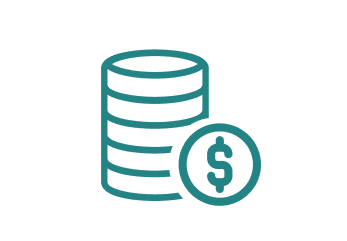Small business owners use balance sheets to understand the overall financial health of their companies. While some business infrastructures, such as C Corps, must submit a balance sheet with their tax returns, you may perform balance sheet analysis to track historical data, determine the right time to grow your operations or to seek investor financing.
Reading a balance sheet can be difficult with all the gathered data condensed into a single document. Yet knowing how to analyze this information allows you to understand your operational performance when compared to other businesses in your market segment.
How to Read a Balance Sheet: 3 Core Components
A balance sheet lists the following financial data of a company:
- Assets (current and noncurrent)
- Liabilities (current and noncurrent)
- Equities
Current assets and liabilities are short-term, meaning they are made within the current year or a specific time. Non-current assets and liabilities are long-term investments and debts that will last longer than a year.
Assets may consist of everything the company owns, or will own, that increases its value:
- Cash
- Inventory
- Accounts receivable
- Land ownership
- Intellectual property
Liabilities consist of things that are owed:
- Wages
- Debts (short-term and long-term)
- Leases
- Accounts payable
- Other financial obligations
Equity, also called shareholder equity, comprises the company’s entire net worth to shareholders. It includes:
- The total amount of money that a shareholder invests in the company
- The dollar amount that shareholders would receive when liquidating the entire operations
- Retained earnings and owner’s equity
What Is the Balance Sheet Formula?
Once all the entries are filled with the asset, liability and equity amounts, you use an equation to figure out if the assets balance out against the equity and liability. The equation is:
Assets = Liability + Equity
A business has good financial standing when both sides of the equation are in balance. If assets are greater than liabilities and equity, it means the company has more resources than obligations, which is good for financial stability. If liabilities and equity are greater than assets, it indicates that the company owes more than it owns.
Understanding the Balance Sheet vs. Income Statement
A balance sheet should not be confused with an income statement. While an income statement also lists expenses and profits, it’s used to determine small business efficiency by figuring out the company’s net profits or net losses.
You should not decide between creating a balance sheet versus an income statement. Instead, these two documents, along with a cash flow statement, help you and shareholders to further understand the entire financial background of your company. A balance sheet can tell you about the company’s financial history, how much liquid cash is available, how efficient the company is when using assets and how much risk the business can take without experiencing significant disruptions.
Use Financial Ratios in Your Balance Sheet Analysis
Having all the financial numbers on a single document allows you to analyze the figures to further understand specific aspects of operations. In addition to knowing whether your equity and liabilities are balanced with assets, you can analyze the balance sheet’s financial ratios and historical trends.
Ratios allow you to evaluate a range of financial situations. You can see your current assets, figure out if short-term commitments can be met or understand how dependent your operations are on existing debt.
Three key balance sheet ratios:
- Current ratio: The current ratio allows you to know if short-term assets can pay off your short-term liabilities. The equation is: Current Ratio = Current Assets / Current Liabilities.
- Debt ratio: The debt ratio is an equation where you compare what is owed to what you own to figure out the company’s risk tolerance when paying obligations. The equation is: Debt Ratio = Total Liabilities / Total Assets.
- Working capital ratio: The working capital ratio evaluates the liquidity of operations and whether you are using resources efficiently. The equation is: Working Capital Ratio = Current Assets – Current Liabilities.
Historical balance sheet trends show how your small business weathers through a fluctuating economic landscape during specific periods. Comparing specific past balance sheets allows you to see operational efficiency, growth, risks, profits and losses. You can figure out what you did in the past to overcome obstacles so you can better plan for future risks.
What Will Investors Look for in Your Balance Sheet?
Once you know how to read a balance sheet, it’s equally important to understand what investors look at if you decide to seek funding. Investors use the balance sheet to gauge the historical and future performance of a company and to compare investment opportunities across different companies.
Investors will take a deep look at all assets to figure out how you have grown operations and continually increased profits. These assets can include the following:
- Cash
- Inventory
- Software
- Accounts receivables
- Land
- Intellectual property
They also look at liabilities and the owner’s equity. They want to see what the business owes to others, as well as what the owners have personally contributed to the business. These financial investments, in addition to sweat equity, demonstrate your commitment to the company. They want to see how your company generates its returns.
Investors who have several opportunities to invest in different companies will look at the balance sheet ratios to draw comparisons. They are looking to see if your business has higher liquidity to pay off all debts, lower debt versus income, and rising revenue. After an initial balance sheet analysis, they calculate various ratios to better understand your operations and financial management. The current ratio, which looks at liquidity, and the debt ratio, which demonstrates your ability to meet your obligations, are two figures that interest most investors.
Increase Clarity in Your Balance Sheet
You and your accountant can take several steps to improve the lines on your balance sheet and make it more clear and favorable to investors. You can also use these steps to improve your decision making for operations.
Assess Your Accounting Method
The first step is to change your accounting framework from a cash basis to an accrual basis. Accrual accounting matches your business activity to the periods when its revenues and expenses are earned or incurred. It also involves adopting and recording prepaid expenses and depreciation. This method promotes greater levels of transparency and more accurately presents your company’s financial position to you and investors.
Document Your Prepaid Asset Account
The next step is to document assets with a prepaid asset account. This asset account is called “prepaid expense.” Adding this asset to your balance sheet increases your company’s value by appropriately documenting services owed to you in the future, such as a year’s worth of insurance that you’ve paid for upfront. It becomes added to a separate schedule that sums up to the total in your prepaid expense account. This helps you stay organized and see exactly what you’ve paid for in advance. At the end of the month, you post adjusting entries that allocate the portion of each expense used during the period to its appropriate category.
Use Capitalized Assets & Depreciation
Another step is to use capitalized assets and depreciation. Large physical assets that are purchased for your business often provide future benefits. In accrual accounting, these larger items (e.g., cars, computers and office equipment) can be recorded as fixed assets (or capital) and depreciated over their useful life rather than being directly expensed when they’re purchased. These transactions can increase your company’s balance sheet value to make it more appealing to investors.
When you depreciate an asset, you don’t directly subtract its value from your balance sheet. Instead, you create a separate account called “accumulated depreciation.” This account keeps track of how much of the asset’s value has been used up over time.
It’s important to remember that the depreciation you record in your financial statements doesn’t necessarily match the actual market value of the asset. That’s why accumulated depreciation is kept in its own account, separate from the asset itself.
By using depreciation, you can spread out the cost of your big purchases and show a more accurate picture of your company’s financial health over time.
When More Help is Needed
Business owners can struggle with balance sheet analysis and management. Sometimes you have to estimate changing long-term expenses and assets, as these estimates may fall short of the actual numbers. Other issues include:
- Taking on too much debt relative to business equity
- Defaulting on debt
- Declining asset value
- Missed collections on debt
- Poor asset management
Getting a fractional finance expert or accountant involved can provide better financial reporting for more accurate balance sheets. They can determine valuations on assets, find ways to optimize costs and perform periodic audits of your financial statements. Connect with the experts at Paro for better financial management of your small business. Match with a vetted fractional accounting expert in just days and dive deeper into your financial health.







